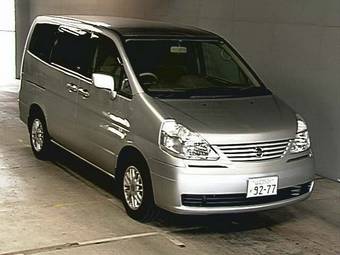The Nissan Serena started life as a very small people carrier, but grew larger over time. It was introduced by Nissan on the demand for a seven-seater family mover during the SUV craze.
Departing from the previous forward control shape, Nissan adopted a bonneted style for the Serena, with the engine compartment projecting forward from the windscreen. This design offers better occupant protection, enabling the Serena to comply with the standards that Nissan applies to its passenger sedans.
The Serena MPV’s primary attraction is that it is a really pleasant van to drive, an easy move upward from a compact sedan. When parked among newer aero-look vans, the Serena MPV seems a little pudgy and old-fashioned, but it does have clean and efficient lines.
The top-of-the-line Highway Star’s two-tone green/silver paint scheme provides a touch of elegance. It is likely that buyers will be more attracted to the generous interior access afforded by the Serena’s large doors and the tailgate. Some owners see this as a safety feature, and others appreciate its ease of operation and the wider opening that it allows. The full-width tailgate is convenient for loading bulky items, through the high life-over can be a bit of trouble if the items are heavy.
Another plus for this MPV is its relatively small size. It’s more than a foot shorter than the Estima, and narrower too. When it comes to close-quarter maneuvering, every inch counts and that makes the Serena MPV a winner in at least one area.
When the Serena was introduced, first owners praised its interior. That’s still true today, 12 years later. As such, visitors to the MPV are greeted by a blocky dashboard that carries instruments and major controls in a pod perched on top, old-fashioned door panels with separate armrests and details more functional than elegant.
There is no sweeping sculptural design here. That said, it should be noted that everything works exactly as it should, and the overall appearance is attractive and restrained. All materials and the workmanship are excellent, as in all Nissan vehicles.
Depending on the model, seats are upholstered in either handsome cloth trim or leather. The seating provides sufficient room to transport seven adults in comfort. There’s room for two in front, two in the centre and three in the back.
Access to the rear seat is good. There fore and aft adjustments on each row make it possible to provide additional leg room for second and third row seats, and the head room is adequate in all positions. Dual air conditioning provides additional comfort throughout the cabin area, with separate controls for the rear seat passengers.
The driving position in the Serena is quite high, giving good all-round vision. The seats are fairly comfortable, although positioned too close to the door.
With all the seats in use, the Serena still offers decent storage space. Folding the centre and the rear seatbacks raises storage space. The rear seats can also be removed completely, and the centre seats tilted forward.
The Serena offers luxury starting with power assist for windows, mirrors and door locks and cabin cooling in front and rear. The rear air conditioning cools the rear-seat area really well.
For the driver, the Serena experience is a pleasant one. A high seating position and many windows ensure good visibility, the power steering is light but has good road feel and the supple suspension provides a smooth car-like-ride.
When driven hard, the Serena signals its “discomfort” with lots of tyre squeal and body roll, but there’s no reason to push it that fast. Within its limits, the Serena is a model of comfort and stability.
In addition, front-wheel disc brakes with rear drums deliver plenty of stopping power. Though the design may be old, the Serena MPV draws far more praises than criticism.
It’s a solid, well-designed package, beautifully built and full of thoughtful touches that please testers and owners alike.
Can consider it if you are looking at MPV. The price is competitive and it is a good car.

Find out more from Nissan.